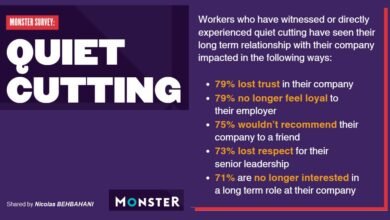
By | Chintan Jain, Associate Director – Product Marketing
Today’s organizations need a new breed of HR that knows how to keep up with the emerging talent demand. As an HR leader, you need to adopt the following disruptive trends to retain and develop talent:
- Be digital-native rather than just using digital solutions
- Shift from organization-driven to employee-centered systems
These trends require HR automation to enable a positive employee experience. It will save your HR department from paperwork, files, email threads, and other repetitive manual tasks that have kept them from performing at their best.
The latest business process automation solutions are cloud-based, cost-effective, and easy to enforce, so you can start reaping the benefits right out of the gate.
How do HR teams benefit from automation?
Here are some of the most common problems that HR automation can solve.
1. Employee onboarding
Onboarding automation helps to create consistent workflows between recruiting, hiring, and onboarding processes. Rather than stressing about finding employee files and adding sensitive information by hand, automating onboarding HR processes will ensure that nothing gets lost along the way. A great employee onboarding can improve employee retention by 82%.
HR digitization ensures that all forms, documents, and legally binding digital signatures are interconnected and in one place to establish compliance. A well-organized onboarding process will reduce human errors, create a positive impression of your organization, and keep your new hires motivated.
2. Easily conduct performance reviews
Organizations that implement regular feedback experience 14.9% less turnover. Your HR team can easily conduct regular performance reviews by analyzing vital HR metrics. This will help your employees to get insights into their performance in the following,
- Progress towards goals
- Determine if key result areas (KRAs) are met
- New skills that need to be developed
- Identify core competencies
The HR team can get unbiased performance reviews of an employee’s performance from their peers and pass on the advice to them, Additionally, employees can also share feedback for managers, and other processes. Such a method will help to improve the working culture of your organization.
3. Create an effective leave management system
Managing time off and attendance is a tedious process. This will be challenging for both HRs and employees. Through HR automation, you can allow employees to mark their work hours and send time-off requests to their immediate managers, and study the leave patterns of employees. 88% of the “best in class” companies automate their time and attendance data collection.
Additionally, this can be integrated with biometric devices and payroll software to reduce payroll errors. Employees can also know their remaining days off without having to contact the HR department.
4. Automate repetitive tasks
HR department deals with many repetitive tasks like sending interview reminders, offer letters, training updates, interview feedback, and more. The HR managers lose an average of 14 hours a week due to the manual completion of tasks that could be easily automated.
You can create a workflow through the centralized HR management system where all these activities can be automated and streamlined. For example, when onboarding new employees, a workflow can be created to automatically send a welcome email. This allows HRs to concentrate on other important activities such as sharing seat location, IT assets, and login credentials.
5. Employee Offboarding
Poorly managed offboarding may lead to employee morale disruption, bad reputation, and financial loss for your business. Despite the risks only, 29% of organizations have a formal offboarding process.
Through HR automation, you can create a systematic way to manage the departure of an employee that is as good as onboarding. It will help to maintain a positive relationship with the departing employee. You can create exit checklists, and automate access removal, payroll, and benefit settlement through one single interface.
Top 3 Automation Scenarios Every HR Team Can Use
Let’s look into a few real-world HR automation examples in action.
1. Reimbursements/expense management
Reimbursements have to be filed properly or it’ll get problematic. Industries that especially work with a lot of client management have many travel and entertainment expenses. Plus, with remote work continuing to be a norm, employees need to be provided with additional allowances for internet and home office furniture
How automated reimbursement works?
Automated expense filing is a lifesaver for organizations where the HR system can be integrated with reimbursement capabilities. Expenses can be clearly classified and queued for approval. Managers will also be able to track teams’ expenses and examine the transactions that occur repeatedly. Plus, it is possible to customize the types of expenses that are unique to the company.
2. Nurturing Human Connection
Remote work has many benefits. But the greatest struggles include loneliness, collaboration, and communication. Keeping employees connected in remote-first companies can be challenging. This doesn’t mean that remote jobs have to be contactless and impersonal.
How does automation enable human connections?
You can facilitate meaningful connections through coffee or lunch roulette. A specified process can be created to add employees to a system. Then it’ll automatically match two or more employees for a spontaneous meetup over the phone or screen. Organizing such types of meetups for virtual teams will promote an Inclusive and communicative company culture; informal exchange of dialogue and viewpoints; human relationships; and internal networking.
3. Preboarding
Preboarding is a crucial stage for organizations as they need to engage with new employees to make them feel secure, welcomed, and included. Organizations must have a proper preboarding process to avoid employees not showing up on the first day.
How automated preboarding work?
New joiners often get the jitters one week before the first day. The HR team can remove the day 1 anxiety by equipping new employees beforehand. A checklist can be created to send a welcome package, educate new hires about the founders and other team members, and prepare for first-day contacts and location.
How to Bring in the Human Touch?
The whole point of HR operations automation is to help the HR department to work smarter and achieve better results. By automating manual HR processes, your team will not be bogged down with redundant admin tasks.
For example, let’s say your organization hires new talents on a regular basis, by creating an automated workflow for educating new hires about your company culture, you can reuse it again for your next onboarding. As a result, you’ll have more time to interact with the new hires, get to know them personally, arrange video calls, and organize coffee or lunch meetups. This will create an inclusive and pleasant workplace culture in their eyes
HR plays a pivotal role in answering tricky benefits questions, having meaningful conversations, providing feedback, and handling employees’ complaints and doubts. So, HR automation does not mean replacing the ‘human’ element.
Automation technology is not just another tool in HR’s toolbox but rather an important one that should be leveraged to free up their time so your team can concentrate on duties that need or are improved by human conversations.






